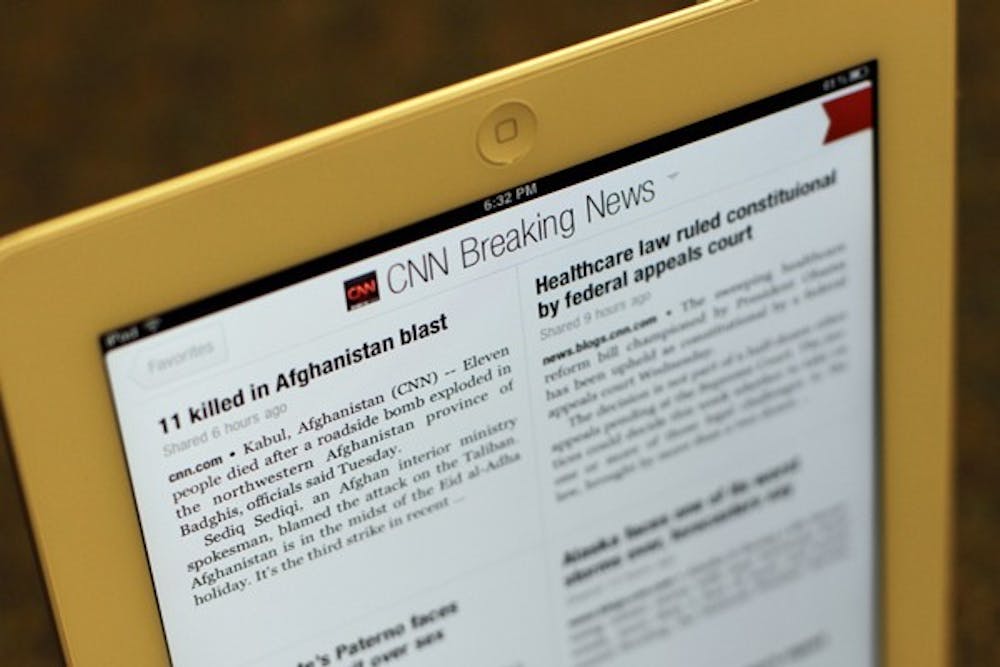The way Americans consume news is changing with tablet devices such as the Apple iPad and the Samsung Galaxy, according to a Pew Research Center study released on Oct. 25.
Eighteen months after the introduction of the iPad, 11 percent of American adults now own some kind of tablet. For those surveyed, reading news was the second most common tablet activity, behind checking email.
According to the study, 42 percent of respondents said they were more likely to read in-depth stories on their tablet.
Retha Hill, professor at the Walter Cronkite School of Journalism and Mass Communication, is part of the 11 percent of Americans who own a tablet.
Hill said the mobility of tablets helps people keep up with news and information.
Though smartphones might be as portable as tablets, the size of a tablet screen makes it easier to read longer, more in-depth stories, Hill said.
Flipboard and Flud, two companies that make iPad applications that collect content from social networks and other websites and present them in magazine form, integrate content in an inventive way that is easy to read, Hill said.
“(These companies) are rethinking the way that they present news and information,” she said.
Other companies like Treesaver, Hill said, are creating iPad apps for publications to allow their content to reach users.
However, consumers’ willingness to pay for news content remains uncertain. Only 14 percent of tablet users surveyed for the Pew study pay for content.
Hill said she pays $15 a month for unlimited content from The New York Times.
“I think that’s a good model but … it’s The New York Times,” she said. “Would I do that for the local newspaper? Maybe not.”
Hill said as a journalism professor, she is more apt to purchase content, but each publication will have to figure out a business model for their specific community.
Colin Milburn, associate professor of English at University of California at Davis, brought his iPad along to a conference on nano-technology and society that began Monday at ASU.
“It’s more or less replaced my laptop when I’m traveling,” he said. “Portability has been hugely important for me.”
Though using a tablet has not increased the amount of news that he consumes. Milburn said he has very little time for reading, so he subscribes to a newsletter that keeps him up to date.
Amanda Huston, a barista at Café Bibliotheca in Hayden Library, uses her iPad to listen to National Public Radio broadcasts. Mobility is an important aspect for Huston.
“I can do anything on it and take it anywhere,” she said.
Though Huston doesn’t subscribe to any news sources, she said she would be willing to pay $15 a month for access to content from The New York Times.
Reach the reporter at ryan.mccullough@asu.edu
Click here to subscribe to the daily State Press newsletter.





